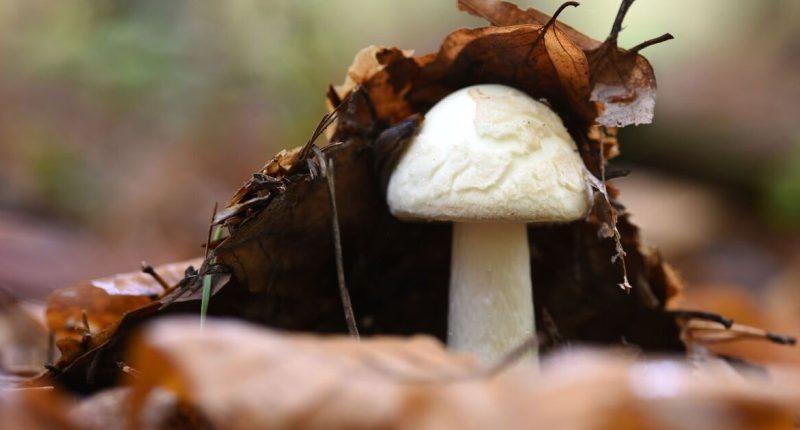Share this @internewscast.com
Death cap mushrooms have become a focal point after Erin Patterson was accused of serving toxic beef wellington to her estranged husband’s family. As the Australian murder trial continues, the prosecution argues it was a delibirate addition while the defence team insists it was simply a “terrible accident” according to the BBC.
Days after the lunch was served, Erin’s former in-laws Don and Gail Patterson as well as Gail’s sister Heather Wilkinson died. Heather’s husband Ian Wilkinson was hospitalised but survived. Consuming just a small portion of death cap mushroom can be lethal, and survivors who’ve tasted it describe it as deceptively pleasant. It can take hours for symptoms to start, but even more concerning is that people often go into complete remission a day later, feeling perfectly fine before damage to the liver, kidney and brain become apparent.
Initial symptoms can take up to 12 hours to appear and include nausea, vomiting and low blood pressure. According to the BC CDC, people may experience a false recovery 24 hours after eating the mushroom, with symptoms seemingly vanishing but the worst effects are still looming.
The mushroom’s toxins block vital cellular functions, primarily assaulting the liver leading to its failure and death over time. Kidney and liver damage symptoms can surface up to a week after ingesting death caps along with developing encephalopathy, which hinders brain function and can result in irreversible harm if untreated, potentially culminating in death swiftly thereafter.
Death cap mushrooms can occasionally be spotted in urban settings and are fairly common across the UK, Ireland, and Europe, as per the Woodland Trust. These mushrooms produce circles of fruiting bodies known as fairy rings, which have been woven into folklore over the centuries.
There are limited effective treatments for death cap poisoning, ranging from stomach pumping to activated charcoal, and severe cases may even necessitate a liver transplant. Silibinin can be used if the poisoning is caught early enough and in 2023, a medical imaging dye was found to block the toxin’s effects, but it has yet to be tested on humans.
Scientifically known as Amanita phalloides, the death cap is accountable for approximately 90% of mushroom-related fatalities worldwide. It can easily be mistaken for various edible mushrooms.
It can grow up to 15cm wide and 15cm tall with a white cap and an off-white stem. The gills beneath the cap start off pure white and transition into creams and pinks as the fungus matures.
Its cap is dome-shaped when young and flattens out as it matures, darkening in the middle as well. It’s virtually odourless when young and can emit a sickly sweet or even rancid smell when old.
The base of the mushroom is swollen, giving it the appearance of sitting in a small bag.
The false death cap, a mushroom that bears an uncanny resemblance to the real death cap, is actually edible and has a strong scent of raw potatoes, as per the Woodland Trust. However, due to its striking likeness to the lethal variety, it’s advisable to steer clear of this mushroom as well.
















